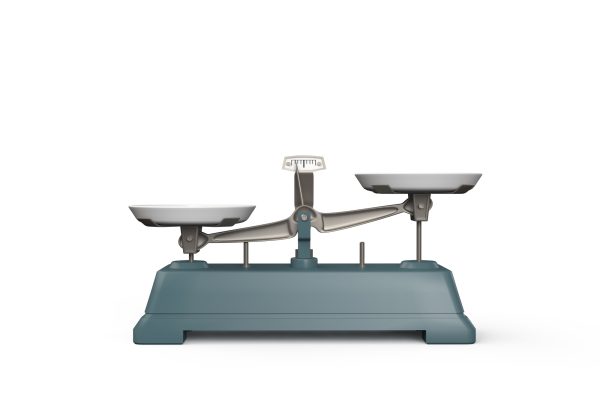All Investment Grade Fixed income is NOT created equal
Many fixed income investors with traditional investment-grade bond portfolios were likely disappointed by their performance in 1Q’21. This is understandable, because for the 5 years through 2020, the average annual investment-grade bond returned over 6.5%, whereas in 1Q, that return was -4.6%. Investors may not appreciate that the average investment-grade bond has a maturity of over 12 years, which results in substantial interest rate risk (duration). Consequently, as interest rates increased in 2021, investment-grade bond prices declined notably. Fixed income investors need not be discouraged: Investment grade fixed income can still contribute positively to a portfolio over the long-term if investors keep duration shorter and pivot away from familiar, large company bonds into lesser known but still high-quality issues. This has been our primary focus for fixed income strategies at ACM for the past several years.
We are carefully constructing investment-grade portfolios with more yield than a portfolio of average bonds with a similar maturity, and we are doing so while taking less interest rate risk (duration). The proof is in the pudding. In 1Q’21, the ACM investment-grade portfolio strongly outperformed: it was down approximately 1.3% (net of fees) while the average investment-grade bond returned -4.6% and the average intermediate investment-grade bond returned -2.2%. ACM’s outperformance was driven by selecting credits that we expected to benefit from the economic recovery and its commensurate reduction in risk premiums (credit spreads). Since yield = (risk-free) interest rate + credit spread, this credit spread compression offset some of the negative impact of interest rate increases and consequently helped to support the prices of those bonds. The ACM portfolio also benefited from having a lower duration (interest rate exposure) than the intermediate benchmark and around only half the duration of the average investment grade bond, implying we took less interest rate risk.
Going forward, we will continue to position the portfolio to outperform in a rising rate environment. Interest rates may rise further, because of the strong economic recovery. When fear is high, many investors hide in Treasuries for safety, which pushes down Treasury yields (remember Treasuries have no credit spreads/risk premiums). However, several stimulus packages combined with the Fed’s actions and an accelerated vaccine rollout to help the economy recover. Recent economic data is showing jobs, confidence, and spending are trending positively and an eventual return to pre-Covid levels is now a realistic possibility. The improving economic outlook has bondholders focusing more on growth prospects and inflation concerns rather than fear.
Our “creatively constructed portfolios” incorporate selections to reduce vulnerability to such interest rate increases and this pushes us away from only owning the highest quality, long-dated bonds, Treasuries, or simply the average investment grade bond. Finding those selections puts us deep in the weeds of corporate credit analysis. We regularly evaluate hundreds of bonds and preferreds, and from these we select a small percentage. While most fixed income investors are likely not intending to make a big interest rate bet, many are unknowingly doing just that if they are buying a basket of fixed income funds or only the highest quality bonds.
The fixed income securities we purchase generally satisfy at least one of the following three criteria: the security provides a yield higher than the average investment grade bond with a similar maturity, the security has the potential to trade at a tighter spread (lower risk premium), or the security is an attractive preferred or convertible security rather than a traditional corporate bond. To implement this approach, we focus on BBB and BBB-rated fixed income securities. The lowest two tiers of investment grade, BBB/BBB-, where thorough credit research pays off the most, still allows the investor to own investment-grade securities. To be clear, we do not limit ourselves to BBB/BBB- rated securities. When we occasionally find higher-rated securities with attractive yields, we purchase them. Our thorough credit research allows us to find securities that are often under-appreciated, so when the market catches on to the fundamental story, these securities will often rise in price (trade at a tighter credit spread/small risk premium). Finally, we also purchase multiple investment grade preferreds that we think provide attractive additional yield, typically well in excess of most investment grade bond yields. Among preferreds, being exceedingly picky is essential to safeguard against downside risks. Convertible bonds are often neglected by traditional bond investors, but can also be extremely attractive, especially during market downturns such as in 2020. In 2020, we purchased multiple securities that we were able to later sell at sizable gains. Investors should be aware that each preferred is quite unique, and even preferreds from the same issuer almost always have different terms.
In the current environment, an investment-grade fixed income portfolio with an attractive yield will always require some degree of interest rate exposure. The obvious options with minimal interest rate risk exposure, unfortunately, provide minimal yield. An extremely short-dated investment grade portfolio comprised of 1 year investment grade bonds will yield less than 0.4% (that is a CD type of yield.) Another safe option is a floating-rate investment-grade bond portfolio, but this also offers a low yield because investment-grade risk premiums/credit spreads are low and very short-term rates are approaching zero (reminder: yield = interest rate + credit spread). Building an interest rate resistant fixed income portfolio can potentially provide you with a higher return and also likely lessen your potential interest rate downside. Our creative approach has led to solid outperformance in 2021, and we believe it will continue to be a solid strategy going forward.
For those investors seeking additional yield and willing to withstand a bit more volatility, we offer a fixed plus strategy. This strategy generally includes approximately 20-25% non-investment grade securities and correspondingly provides a higher yield.
Bonus: Does an additional 1% in fixed income really matter?
To give you some real-world context, a 1% return will yield 10.5% profit over 10 years’ time while a 2% return will yield 21.9%. On a $300,000 initial investment that is an additional $34,300, which is enough to buy a new car every ten years, which is not a ‘sleepy’ amount of money. If an investor has a larger account or a longer time horizon, the impact of an additional 1% becomes even more significant.




LATEST ARTICLES